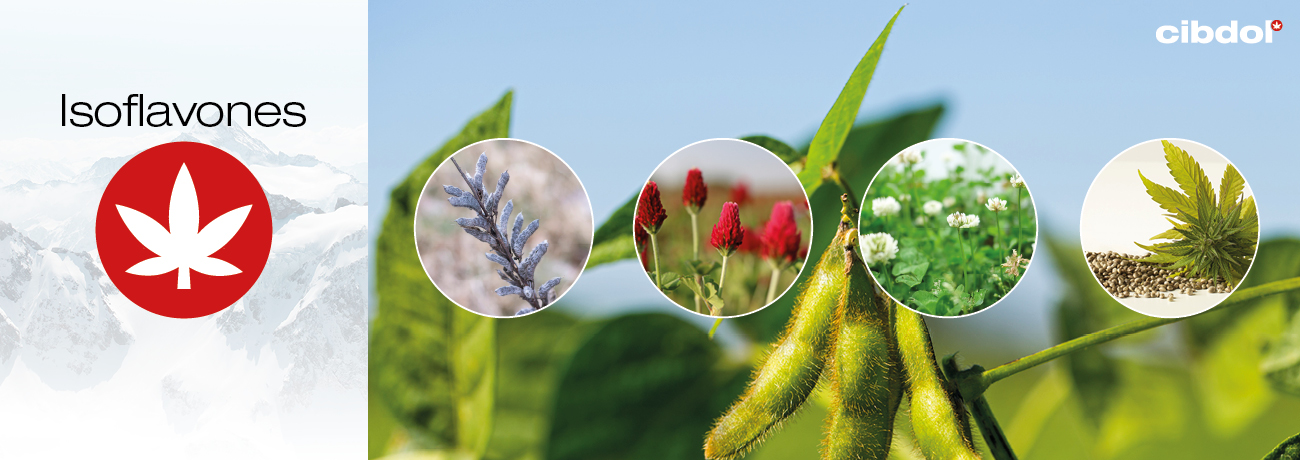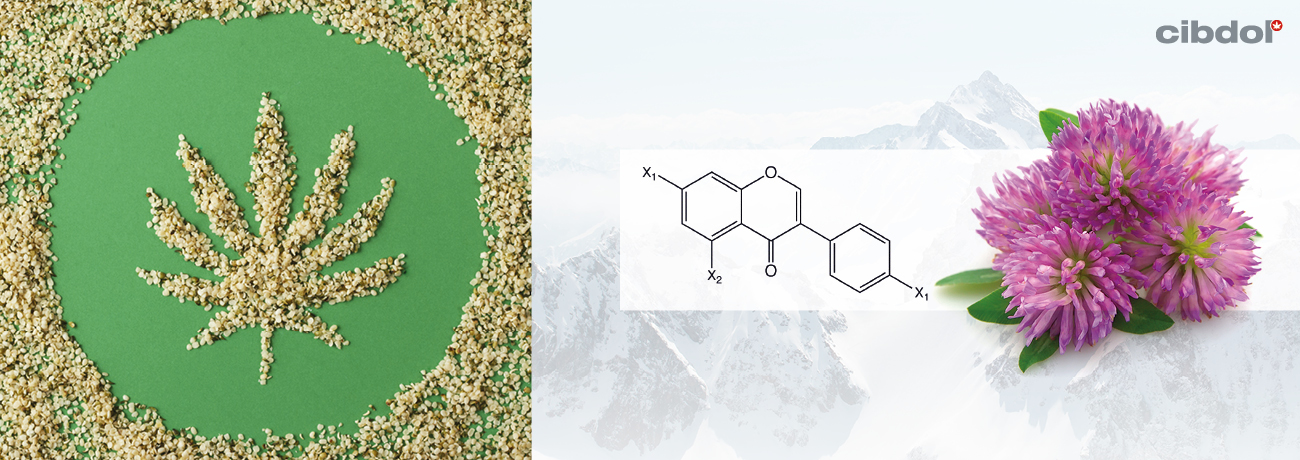What are isoflavones?

Isoflavones are a class of flavonoid found predominantly in members of the Fabaceae (Leguminosae) bean family. However, there is provisional evidence to suggest that the Rutaceae, Cannabaceae, and Solanaceae families also produce isoflavones. When consumed, isoflavones are thought to act as phytoestrogens. By binding to estrogen receptors, it's possible that isoflavones may influence the production of sex hormones and enzymes.
Colour
Isoflavones are not as prevalent as other classes of flavonoid, but common isoflavones such as daidzein, genistein, and biochanin A come in a variety of colours.
Found in
Soybeans, red clover, white clover (seeds), and hemp seeds.
Supporting research

A detailed understanding of the benefits of isoflavone consumption remains under review.
In 2001, the Institute of Food Chemistry and Technology in Vienna examined isoflavone extracts genistein, daidzein, and biochanin A. Researchers concluded that the compounds had "high radical scavenging capacity", a term used to describe their ability to reduce the production of free radicals.
As part of a 2005 animal study[1], Chinese researchers highlighted the “anti-oxidation” effects of soybean isoflavones in rats over four weeks. They compared readings taken from the animals’ livers before and after the study, finding isoflavones to influence the production of antioxidant enzymes. As a result, the number of oxygen free radicals decreased.
A dissertation completed at the Institute of Chemical Technology in Prague highlighted[2] the presence of isoflavones in plant families other than Fabaceae. The study also explored the possible beneficial impact of isoflavones on breast and prostate cancer, menopause, osteoporosis, and cardiovascular disease.
Safety and side effects
Isoflavones appear well-tolerated in humans, with the European Food Safety Authority finding no adverse effects. However, there is conflicting evidence regarding their influence on estrogen receptors. Preclinical studies[3] suggest a potential risk associated with excessive soy isoflavone intake among women with a history of breast cancer.
A factor acknowledged by all parties is that there is a significant lack of data regarding the long-term effect of isoflavones.
[1] Huang, Q., Yang, X., & Li, W. (2005). Study on anti-senescence and anti-oxidation effects of soybean isoflavones in rats. CNKI. http://en.cnki.com.cn/Article_en/CJFDTotal-ZSPZ200505008.htm [Source]
[2] Koblovská, R. (2008). Isoflavones in the Rutaceae family. INSTITUTE OF CHEMICAL TECHNOLOGY. Published. http://www.pollenbiology.cz/resources/Theses/2008_Koblovska_PhD.pdf [Source]
[3] Higdon, J. (2004). Soy Isoflavones. Oregon State University. Published. https://lpi.oregonstate.edu/mic/dietary-factors/phytochemicals/soy-isoflavones [Source]
[1] Huang, Q., Yang, X., & Li, W. (2005). Study on anti-senescence and anti-oxidation effects of soybean isoflavones in rats. CNKI. http://en.cnki.com.cn/Article_en/CJFDTotal-ZSPZ200505008.htm [Source]
[2] Koblovská, R. (2008). Isoflavones in the Rutaceae family. INSTITUTE OF CHEMICAL TECHNOLOGY. Published. http://www.pollenbiology.cz/resources/Theses/2008_Koblovska_PhD.pdf [Source]
[3] Higdon, J. (2004). Soy Isoflavones. Oregon State University. Published. https://lpi.oregonstate.edu/mic/dietary-factors/phytochemicals/soy-isoflavones [Source]












